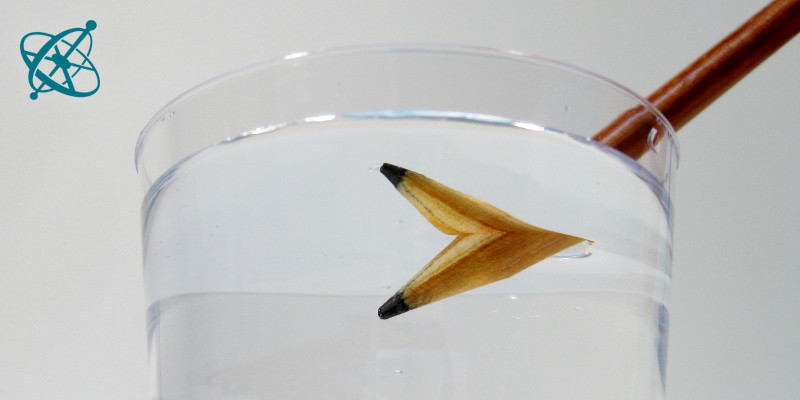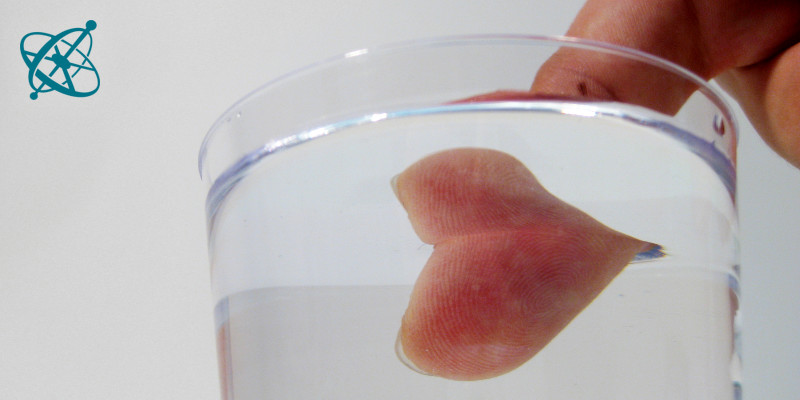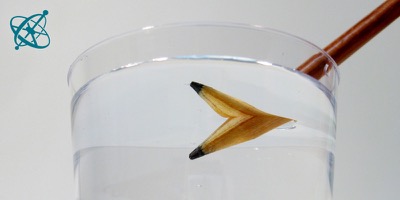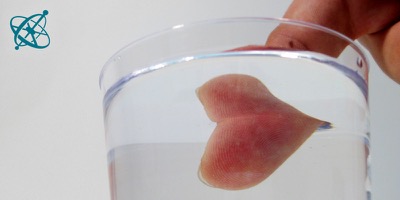 www.sciensation.org | Ciênsação hands-on experiments are published as Open Educational resources under a Creative Commons Attribution-ShareAlike 4.0 International License.
www.sciensation.org | Ciênsação hands-on experiments are published as Open Educational resources under a Creative Commons Attribution-ShareAlike 4.0 International License.
Wait, isn't water supposed to be transparent?

When can you see through the surface, and when does it reflect?
Total internal reflection
Although clean water is transparent, it is not always possible to look through a water surface.
Let your students find out under what conditions the air-water interface lets light pass, and when it reflects the light.
Finding the conditions under which total internal reflection takes place.
Water
Fill a transparent plastic cup or glass with water and hold it just a bit higher than your eyes. Stick your fingertip a centimeter into the water.
1. Why can't you see all of your finger, but only your fingertip and its reflection?
2. Look at the glass from different sides, including top and bottom. Under what conditions can you see through the water surface, and when does it reflect?
Does it make a difference if the other side of the water surface is very bright or dark?
› No.
Do you note a difference between the reflections seen from above and from below the water surface?
› Reflections seen from above are weaker than those observed from below.
Is light passing from water to air refracted at the surface towards the normal or away from it?
› It is refracted away from it.
What happens to a light beam that, according to Snell's law, would be refracted more than 90˚ from the normal?
› It is reflected at the surface.
It is easy to see through a water surface from above, even if some weak reflections reduce the contrast. As long as you look along an axis close to the surface normal, it is also possible to see through the water surface from below. However, for observation angles larger than arcsin( nair / nwater ) ≈ 48˚ to the surface normal, there is no light visible from above the surface, because it has been refracted to smaller angles. Instead, the observer sees a reflection – as if the surface was a mirror.
It has to be noted though, that due to the second refraction on the glass surface, your students will probably see a total internal reflection whenever they look from the side.

